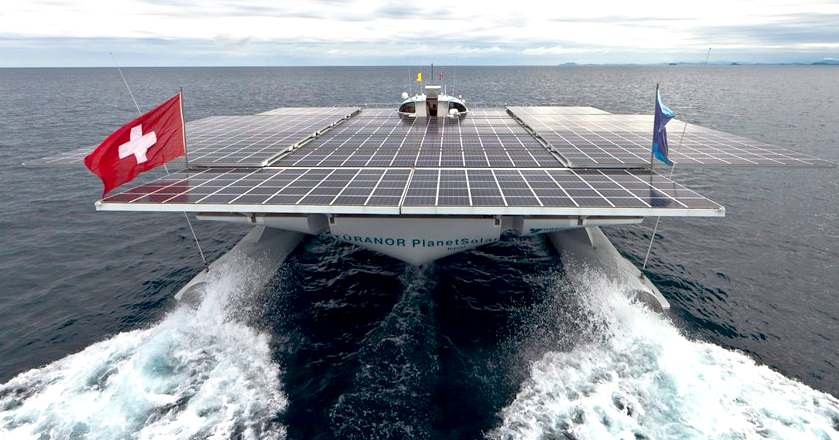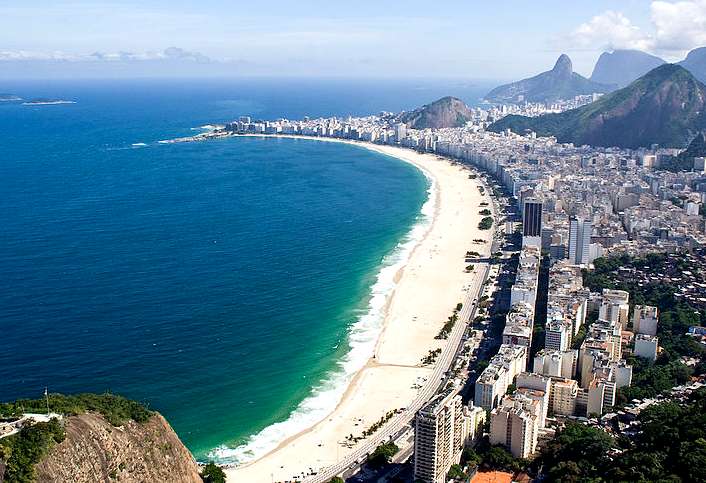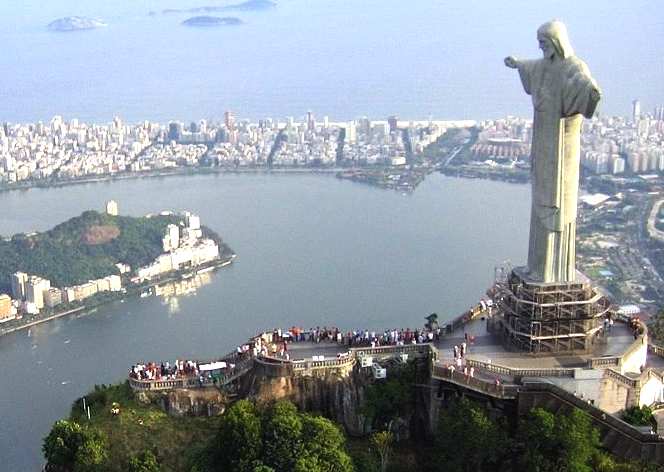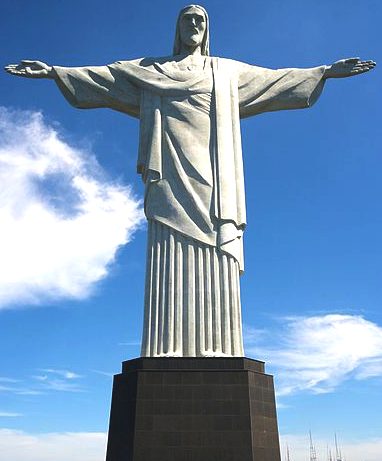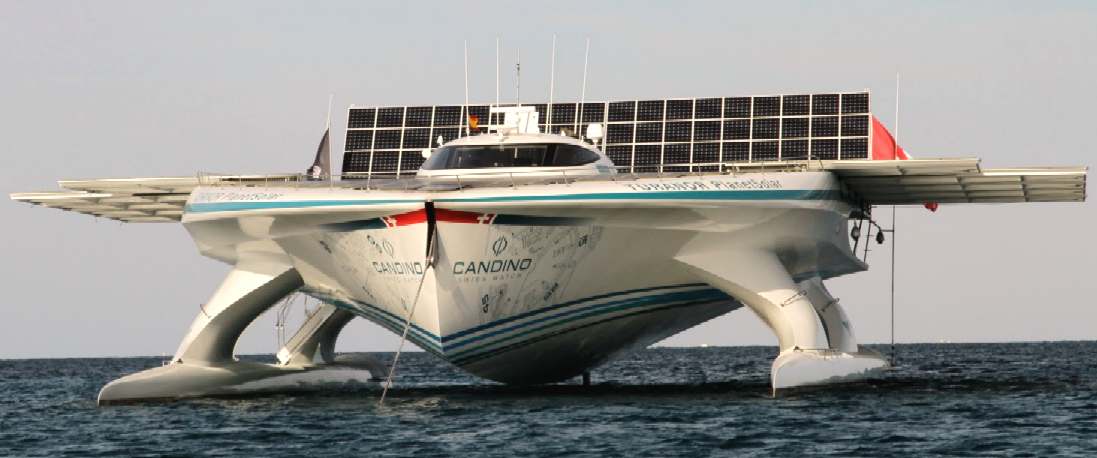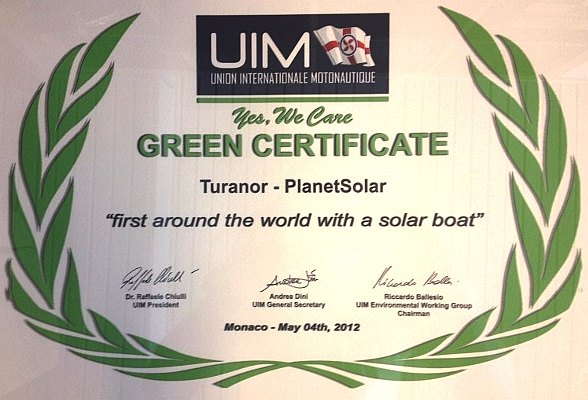|
PLANETSOLAR - RIO DE JANEIRO, BRAZIL
|
|
|
The PlanetSolar full steam ahead to Rio to examine Saharan dust
PlanetSolar
will be studying Saharan dust as it impacts upon the Atlantic
Ocean. Rio de Janeiro is on a strip of Brazil's Atlantic coast, close to the Tropic of Capricorn, where the shoreline is oriented east–west. Facing largely south, the city was founded on an inlet of this stretch of the coast, Guanabara Bay
(Baía de Guanabara), and its entrance is marked by a point of land called Sugar Loaf
(Pão de Açúcar)—a "calling card" of the city.
Rio has a tropical savannah climate (Aw ) that closely borders a tropical monsoon climate (Am ) according to the Köppen climate classification, and is often characterized by long periods of heavy rain from December to
March. In inland areas of the city, temperatures above 40 °C (104 °F) are common during the summer, though rarely for long periods, while maximum temperatures above 27 °C (81 °F) can occur on a monthly basis.
The Copacabaña beach
CRISTO REDENTOR
Christ the Redeemer (Portuguese: Cristo Redentor, standard Brazilian Portuguese: [ˈkɾistu ʁedẽˈtoʁ], local dialect: [ˈkɾiʃtu ɦedẽjˈtoɦ]) is a statue of Jesus Christ in Rio de Janeiro, Brazil; considered the largest Art Deco statue in the world and the 5th largest statue of Jesus in the world. It is 30 metres (98 ft) tall, not including its 8 metres (26 ft) pedestal, and its arms stretch 28 metres (92 ft) wide. It weighs 635 tonnes (625 long, 700 short tons), and is located at the peak of the 700-metre (2,300 ft) Corcovado mountain in the Tijuca Forest National Park overlooking the city. A symbol of Brazilian Christianity, the statue has become an icon for Rio de Janeiro and Brazil. It is made of reinforced concrete and soapstone, and was constructed between 1926 and 1931.
The famous statue of Christ: Cristo Redentor (Christ the Redeemer) on Corcovado Mountain, the subject of breathtaking views and stunning scenery changes, such as clouds streaming across the sculpture, reminding us of the awesome power of nature.
A superb sculpture, brilliantly conceived and executed - a perfect focal pinnacle, but subject to considerable environmental erosion, due to the soapstone substrate. A reminder perhaps to the faithful to keep the faith.
AWARDS
- PlanetSolar benefits from the following awards: * Award of Flag 71, Raphaël Domjan, MI’11 PlanetSolar, Explorers Club Flag * 2011 Environmental Award, Special mention environmental benefit
The PlanetSolar on its way to visit Paris, France on 10th September 2013, then it will return to Rio to study more ocean activity, without using a single drop of diesel fuel.
LINKS
http://www.planetsolar.org http://www.guinnessworldrecords.com/ http://challengers.guinnessworldrecords.com/ CBS Solar boat shines light on suns power Worlds-largest-solar-powered-boat-powers-arrives-Britain-spectacular-style.html?ito=feeds-videoxml http://www.mby.com/news/535154/planetsolar-world-s-largest-solar-powered-boat-visits-london http://www.wharf.co.uk/2013/08/worlds-largest-solar-powered-s.html#more The worlds largest SOLAR boat breaks world record crossing Atlantic just 22 days http://www.nytimes.com/2013/06/25/science/solar-boat-harnessed-for-research.html New York Times solar boat harnessed for research http://solar.calfinder.com/blog/solar-politics/solar-boat-lands-cop16/ economic times india ms-turanor-planetsolar-worlds-largest-solar-boat http://oweolar.info/2012/09/page/33/ http://www.newscientist.com/blogs/shortsharpscience/2011/08/solar-powered-yacht-docks-at-h.html http://au.businessinsider.com/oceanographic campaign to study the gulf stream http://www.cbsnews.com/8301-35040_162-57591895/solar-boat-shines-light-on-suns-power/ http://www.planetsolar.org/follow-us/planetsolar-awards http://www.ship-technology.com/projects/planetsolar/
Design concept - Raphael Domjan - PROMOTIONAL TOUR 2012
English - Swiss - French - History - Links - Homecoming
The captain of a solar powered ship takes on pirate whalers with a $Billion dollars riding on the conclusion.
The latest British 'Bluefish' world record contender is somewhat longer at 40 meters (130 ft) and 16.2 meters (52.65 ft) wide in the water. The Bluefish/SNAV platform also has more than twice the power to weight ratio of Planetsolar and an anticipated average speed of 7-10 knots, with a top speed of 18 knots. That will make the Bluefish platform the largest and the fastest solar boat in the world, once it hits the water.
|
|
|
This website is Copyright © 2013 Bluebird Marine Limited. The names Bluebird™, Bluefish™, Solar Navigator™,Blueplanet Ecostar BE3™, Utopia Tristar™ and the blue bird and fish in flight logos are trademarks. All other trademarks are hereby acknowledged.
|
|
